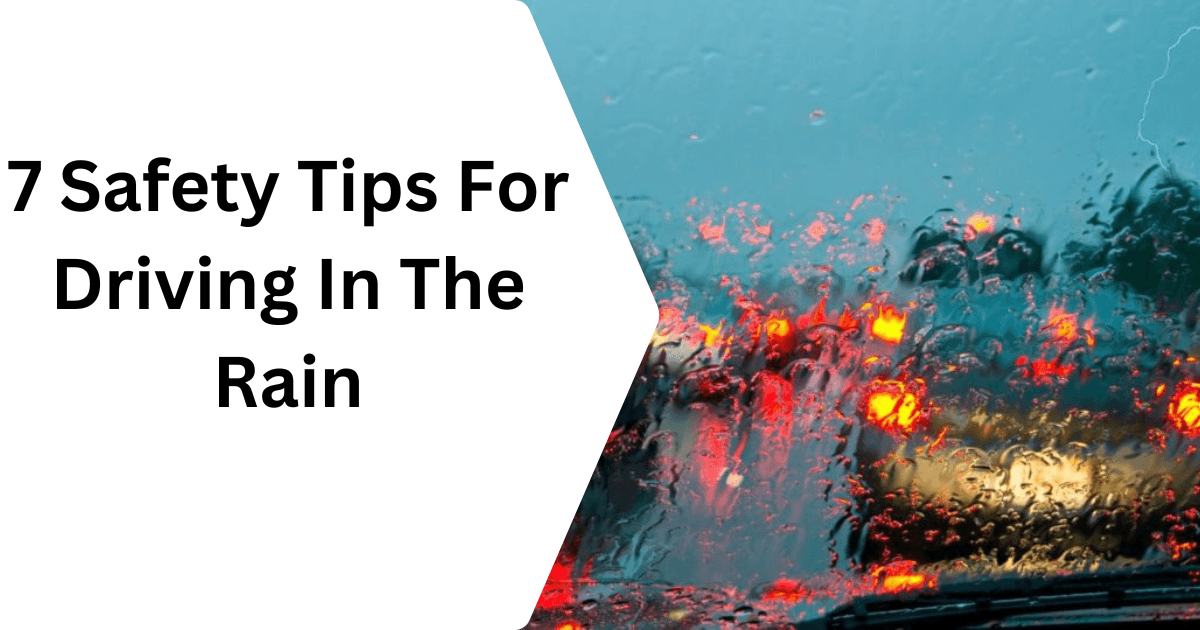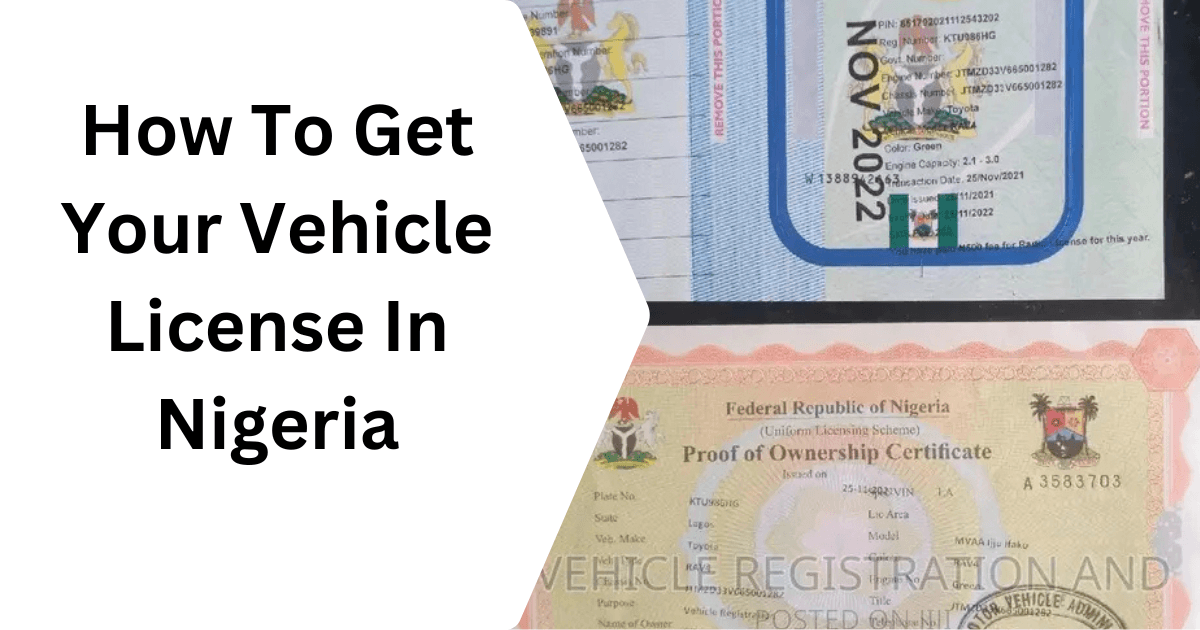Each year, nearly 75% of weather-related car accidents occur on wet roads, and 47% happen during rainfall. With lower visibility, slippery roads, and the need for quick reactions, driving in the rain can be one of the most challenging and dangerous situations drivers face. Wet roads reduce tire grip, making it harder to control the car, and heavy rain can make it difficult to see clearly, increasing the risk of accidents.
With the rainy season approaching, it’s important to be prepared and know how to drive safely in wet conditions. Following the right safety tips can help you stay in control of your vehicle, avoid hazards, and reach your destination without trouble. Here are seven essential tips to help you stay safe while driving in the rain.
Slow Down and Drive Carefully
Driving slower than usual is one of the safest things you can do when it’s raining. Wet roads can make it easy for your tires to lose grip, especially at higher speeds, which increases the chances of skidding or losing control of the car. Reduce your speed, you give yourself more time to react to anything unexpected, like a car stopping suddenly or a sharp turn up ahead.
Driving carefully also means avoiding sudden movements like quick turns or hard braking, as these can cause your car to slip on the wet surface. Gentle steering and gradual braking help keep your car stable and reduce the risk of accidents.
Keep a Safe Distance from Other Vehicles
In rainy conditions, it’s important to leave extra space between your car and the vehicle in front of you. Wet roads make it harder for tires to grip to the road, which means your car needs more time and distance to come to a complete stop.
A safe following distance also helps you avoid getting splashed by water from other vehicles, which can make it harder to see. Aim to keep at least a three-second gap in dry weather and increase it to four or five seconds when it’s raining. This extra space will give you a better view of the road ahead and help you stay in control, even in wet conditions.
Turn On Your Headlights
Turning on your headlights when it’s raining makes it easier for you to see the road and for other drivers to see you. Rain reduces visibility, and headlights help light up the road, showing any obstacles or changes in the road conditions. Even in light rain, using your headlights can make a big difference in helping you stay aware of your surroundings.
Headlights also help other drivers spot you from a distance, which is important for everyone’s safety. In many places, it’s required by law to turn on headlights when driving in the rain, even during the daytime. Keeping your headlights on not only improves your view but also makes sure you’re visible to others, reducing the chances of accidents.
Avoid Sudden Braking or Sharp Turns
When driving in the rain, avoid sudden braking or sharp turns, as these can cause your car to lose control on wet roads. Slippery surfaces make it easy for tires to skid if you brake too hard or turn too quickly. Instead, slow down gradually by easing off the accelerator and gently pressing the brake to come to a stop smoothly.
Making gentle, steady movements keeps your car stable and lowers the risk of accidents. If you need to turn, begin slowing down well before the curve and steer smoothly through it. This way, you stay in control, even on slick roads.
Use Defoggers to Keep Windows Clear
Rainy weather can cause your car windows to fog up, making it hard to see clearly. This happens because of the difference in temperature between the inside and outside of your car. To prevent this, use your car’s defogger settings. Turn on the defogger and set it to blow warm air onto the windshield. This will help clear the fog and improve your visibility.
Keeping your windows clear is very important for safe driving. If your car doesn’t have a defogger, turn on the air conditioning or slightly open a window to let fresh air in, which helps reduce the fog.
Check Your Tires and Wipers Before You Drive
Before driving in the rain, make sure your tires and wipers are in good condition. Your tires need enough tread (the grooves in the rubber) to grip the wet road and prevent skidding. If the tread is worn down, it’s harder for the tires to maintain traction, which can be dangerous in rainy weather. Check that your wipers work well and can clear the windshield without leaving streaks.
Good tires and working wipers are essential for safe driving in the rain. Clear vision and solid traction help you stay in control, avoid hydroplaning, and see other vehicles and obstacles.
Watch Out for Puddles and Standing Water
When driving in the rain, avoid driving through large puddles or areas with standing water. Hitting a deep pothole at high speed can cause your car to hydroplane, which is when your tires lose contact with the road and slide on top of the water. This can make steering difficult and lead to accidents. If you see a puddle, slow down or try to go around it if it’s safe to do so.
Puddles can also hide potholes or other hazards that could damage your car. Driving slowly and carefully around standing water helps you
FAQs
1. What should I do if my car starts to hydroplane?
If your car begins to hydroplane, stay calm and gently ease off the accelerator—do not brake suddenly. Keep the steering wheel straight and wait until your tires regain traction with the road. Once you feel in control again, you can gently steer as needed. Avoid sharp turns or sudden movements until you have fully recovered control.
2. How much space should I leave between my car and the one in front when driving in the rain?
When it’s raining, aim to keep a following distance of at least four to five seconds from the vehicle in front of you. Wet roads increase stopping time, so giving yourself more space will help you react safely if the car in front stops suddenly. This extra distance helps reduce the risk of rear-end collisions in slippery conditions.
3. Do I need to turn on my headlights in light rain?
Yes, it’s recommended to turn on your headlights even in light rain. Rain reduces visibility, and headlights help you see the road more clearly while making your vehicle more visible to others. In some places, it’s a legal requirement to use headlights when it’s raining, regardless of the time of day.
4. How can I prevent my windows from fogging up while driving in the rain?
To prevent foggy windows, use your car’s defogger or turn on the air conditioning to remove moisture from the air. Direct warm air onto the windshield if you have a defogging setting. You can also slightly open a window to improve air circulation, helping to clear the fog faster and maintain visibility.
5. Is it safe to drive through deep puddles?
Driving through deep puddles is risky and should be avoided whenever possible. Deep water can cause your car to hydroplane, damage the engine, or hide potholes and other hazards that could harm your vehicle. If you must drive through a puddle, slow down and proceed cautiously, or consider going around it if it’s safe to do so.




